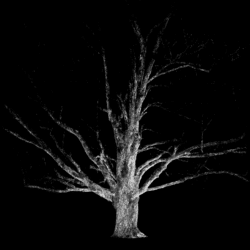New Provisions of the Income Tax Act
The second set of major changes to the Income Tax Act as it affects registered charities, which have been evolving since November 12, 1981 when the famous MacEachen Budget was tabled in the House of Commons, was finally enacted on December 20, 1984. Most of the changes were effective for taxation years commencing after 1983, however, some of the provisions apply to the 1984 taxation year, a few to taxation years commencing after 1984 and one is applicable/or 1983 and subsequent taxation years. In the main, the changes outlined in the Press Release from the Department of Finance dated December 20, 1983 (a copy can be found on pages 65 and 66 of The Philanthropist, Winter, 1984) were those enacted on December 20, 1984 and it is our fervent wish that there be no more major amendments to the Income Tax Act for the foreseeable future since the provisions affecting registered charities have been changed twice within the last 10 years.
Generally, an active charity will not be affected adversely by these changes provided that it is designated as a”charitable organization”. The major changes relate to charitable foundations, both public and private, with the more onerous provisions relating to private foundations. One of the components of the required disbursement quota consists of 4.5 per cent of the value of the foundation’s investment assets, although calculating the amount to which the percentage is applied is somewhat complicated. Unfortunately, neither draft nor final income tax regulations describing the required frequency, and method to be used, in the valuation of investment assets have been released, with the result that there is considerable uncertainty as to the amount that a charitable foundation must spend on charitable activities and/or distribute by way of gifts to qualified donees in respect of taxation years commencing after 1983. We understand, however, that draft regulations will be issued shortly for comments by interested parties.
A by-product of the enactment of the changes to the provisions of the Income Tax Act as they affect registered charities is that all registered charities will be designated as”charitable organizations” or”public” or”private” foundations. This required designation also applied to charities that were registered as of February 15, 1984. After enactment of the new provisions on December 20, 1984, but before January 1, 1985, approximately 50,000 forms (T638-C for charitable organizations, T636-A for public foundations and T637-B for private foundations) were sent to an equal number of registered charities. While the vast majority of registered charities were designated as they expected, thereare undoubtedly some registered charities which find themselves with a different designation than they had anticipated. Revenue Canada has suggested, on the form, that such organizations make their disagreement known to the Department with the hope that the problem can be resolved to the satisfaction of both parties. An unanticipated designation may simply be the result of a misunderstanding by Revenue Canada as to the activities or non-activities of the registered charity in question. As a general rule, a registered charity will prefer to be designated as a “charitable organization” as provisions relating to these are not very onerous while the most onerous provisions apply to organizations designated as “private foundations”. Provisions for “public foundations” are similar to those for private foundations with some exceptions, including those relating to non-qualified investments.
ReBaker
A recent case ofinterestto charities is Re Baker( 1984), 47 O.R (2d) 415; 17
E.T.R 168 ( Ont H.C.). This is not a tax case but it is important to all charitable organizations which find, or are likely to find, themselves beneficiaries of bequests.
The facts were that Dr. Baker died in 1980 and by the terms of his will left a life interest in his estate to his wife, with power to encroach on capital in her favour. Subject to this limitation, the residue of his estate was bequeathed to Northwestern General Hospital”for the general purposes of the said hospital”. In the year of Dr. Baker’s death, Northwestern General Hospital Foundation was incorporated. Its objects included the maintenance of an endowment fund for the benefit and advancement of medical education and research and patient care throughout Canada. Two years later, the Harold and Grace Baker Centre was incorporated. Its objects were to maintain a nursing home, a retirement home, a day care centre and a nursery school, and included the right to transfer funds to the Northwestern General Hospital Foundation.
An application was made by the beneficiaries of the testator’s will, pursuant to the Variation of Trusts Act, RS.O. 1980, c. 519, for court approval of a variation of the terms ofDr. Baker’s will to enable the residue ofhis estate to be used for the purposes of the Northwestern Foundation and the Harold and Grace Baker Centre instead of the Northwestern General Hospital. The application was opposed by the Public Trustee of Ontario.
In the case before the court, counsel for the applicant argued that the variation of Dr. Baker’s will should be permitted, first, on the basis that the beneficiaries of the estate all consented and, under the rule in Saunders v. Vautier ( 1941), 4
Beav. 115,49 E.R 282, they could vary the trust, and secondly, on the ground that the court had inherent jurisdiction to vary the trust.
The court denied the application and refused to consent to a variation of the terms of Dr. Baker’s will. The terms of the will therefore had to be carried out and the residue of Dr. Baker’s estate had to be transferred to Northwestern General Hospital.In the judgment, the court found that the Public Trustee had standing to attend the hearing of the application even though all parties were represented. It also concluded that while the rule in Saunders v. Vautier might apply to charitable trusts, the rule was not applicable where the beneficiaries sought to vary a trust rather than terminate it Further, the court found it had no inherent jurisdiction to approve the proposed variation, since the court’s inherent jurisdiction did not extend to variation on the basis of mere expediency. Moreover, any special variation jurisdiction in charitable matters would not apply where the Attorney General or, in the case of Ontario, the Public Trustee, acting on behalf of the Crown as parens patriae, objected to the variation. Finally, the court by way of obiter dicta pointed out that the doctrine of cy-pres would not be applicable since the residuary beneficiary named in the will was still in existence and there was no impracticability in carrying out the mandate of the testator that the residue of the estate be given to the Northwestern General Hospital for its general purposes.
As amatteroflaw, the rule in Saunders v. Vautieras stated in Underhill’s Law of Trusts and Trustees, 11th ed. (1959), art 68 is that, if there is only one beneficiary, or if there are several (whether entitled concurrently or successively), and they are all of one mind, and he or they are not under any disability, the specific performance of the trust may be arrested, and the trust modified or extinguished by him or them without reference to the wishes of the settlor or the trustees. This statement of the rule specifically refers to the modification of the trust by beneficiaries. It would seem that it would be possible for a court to fmd, in a particular situation where all beneficiaries together own the entire right of enjoyment in trust property, that they can modify the terms of the trust as well as terminate it and that their ability to do so would result from their rights of enjoyment.
M.L. DICKSON
Member, The Ontario Bar
LAURENCE C. MURRAY
Thorne Riddell, Chartered Accountants


